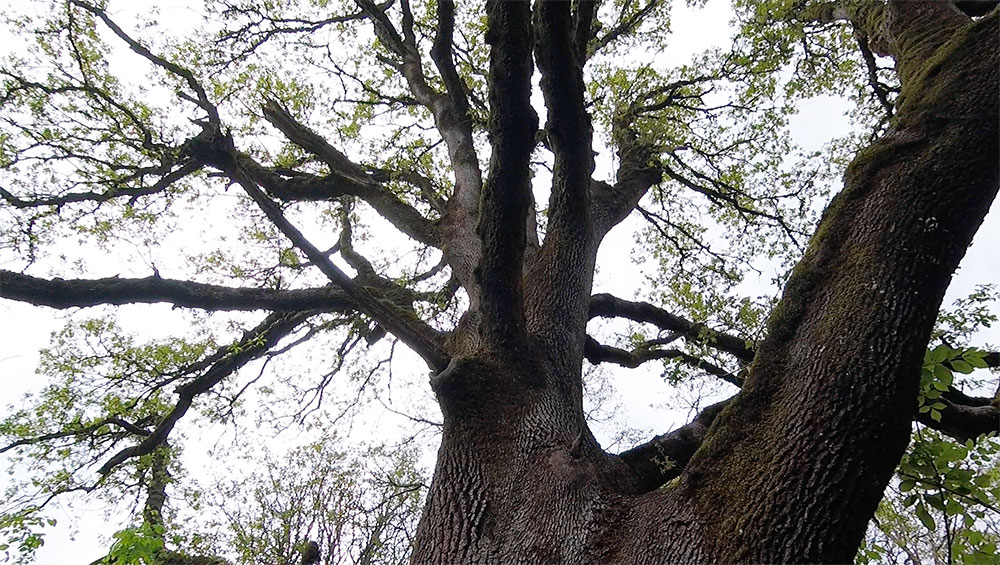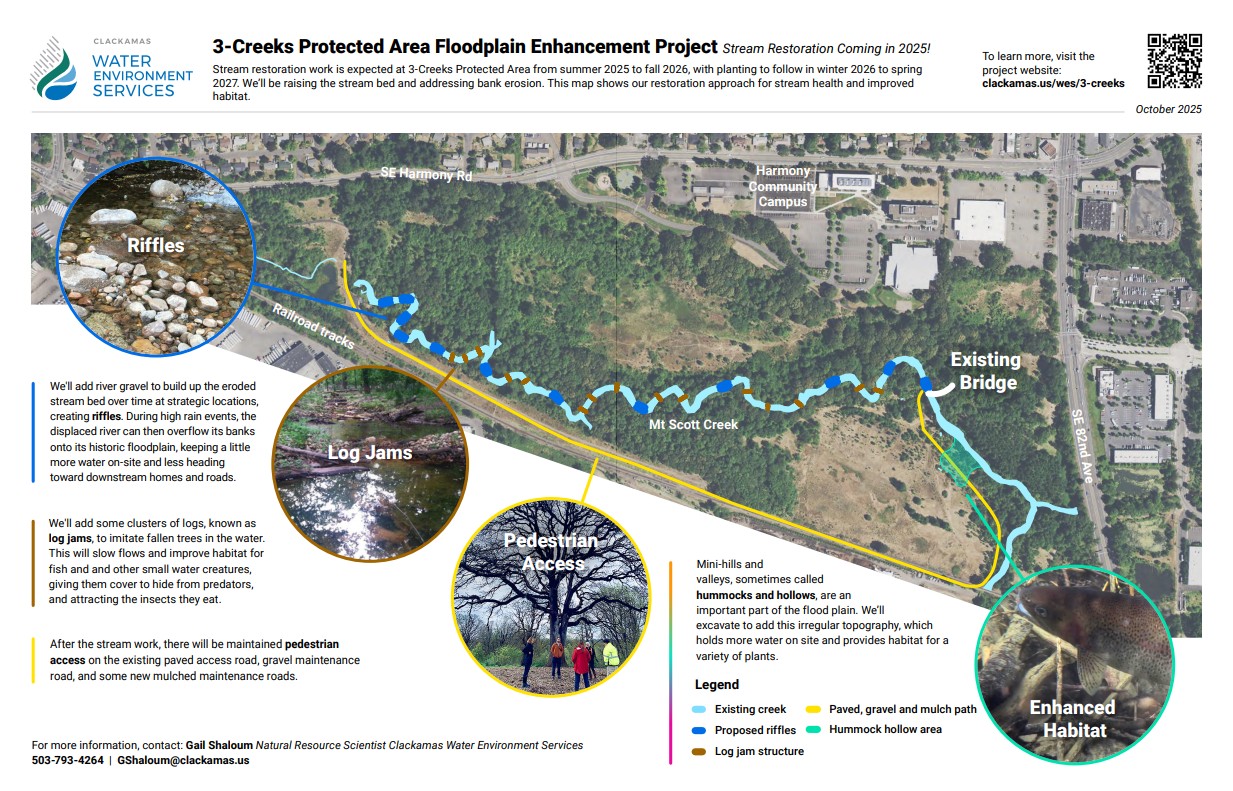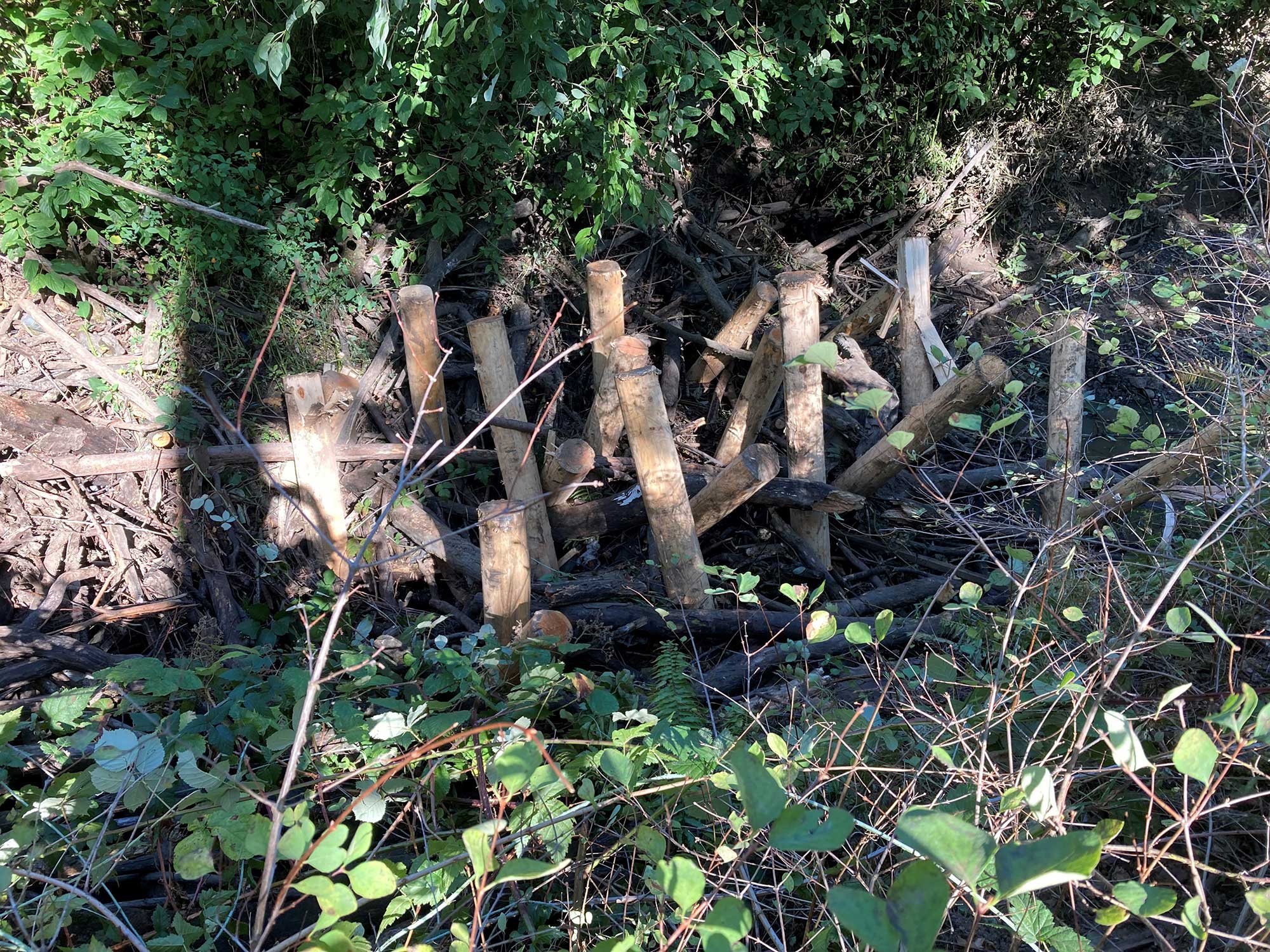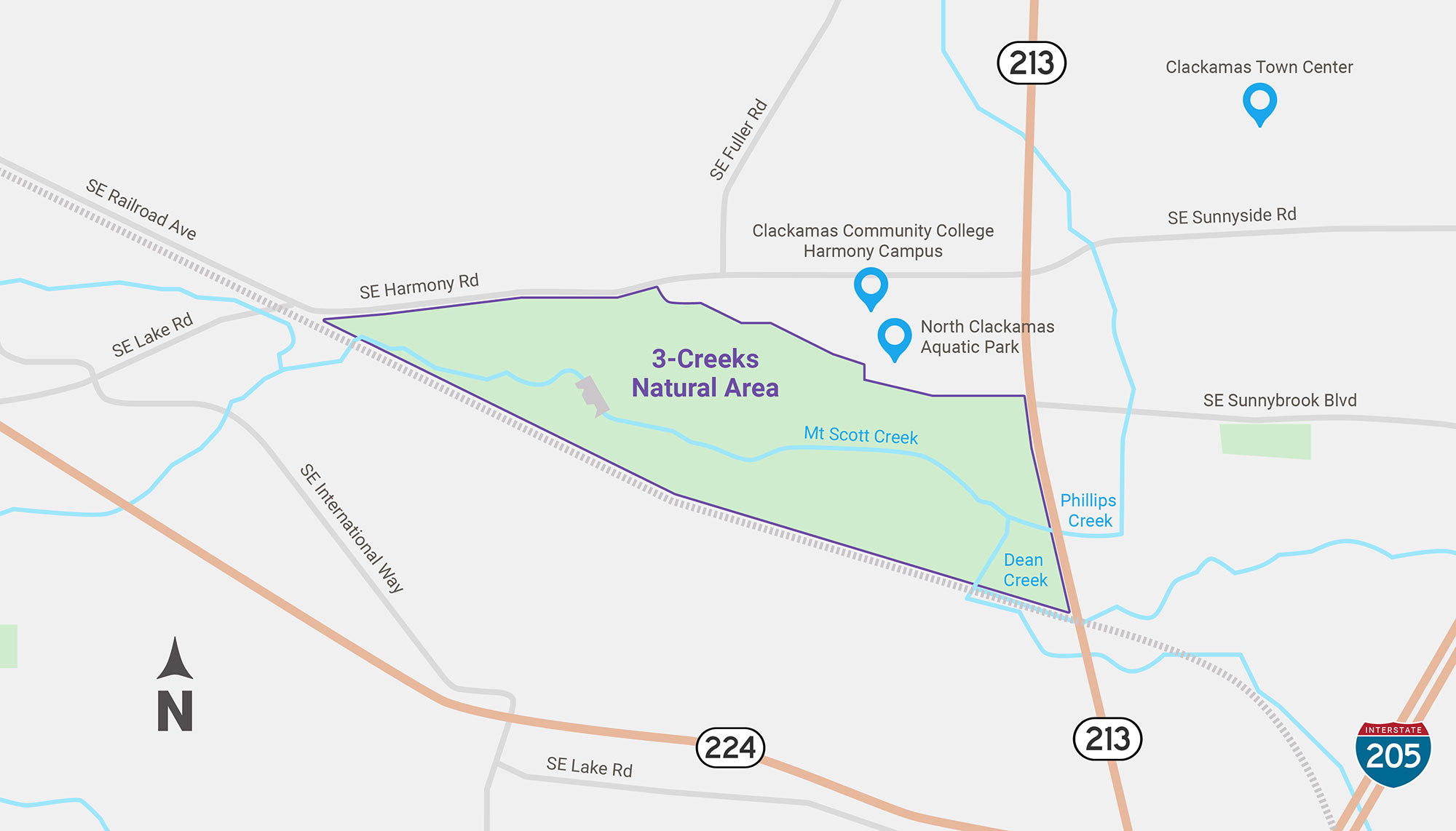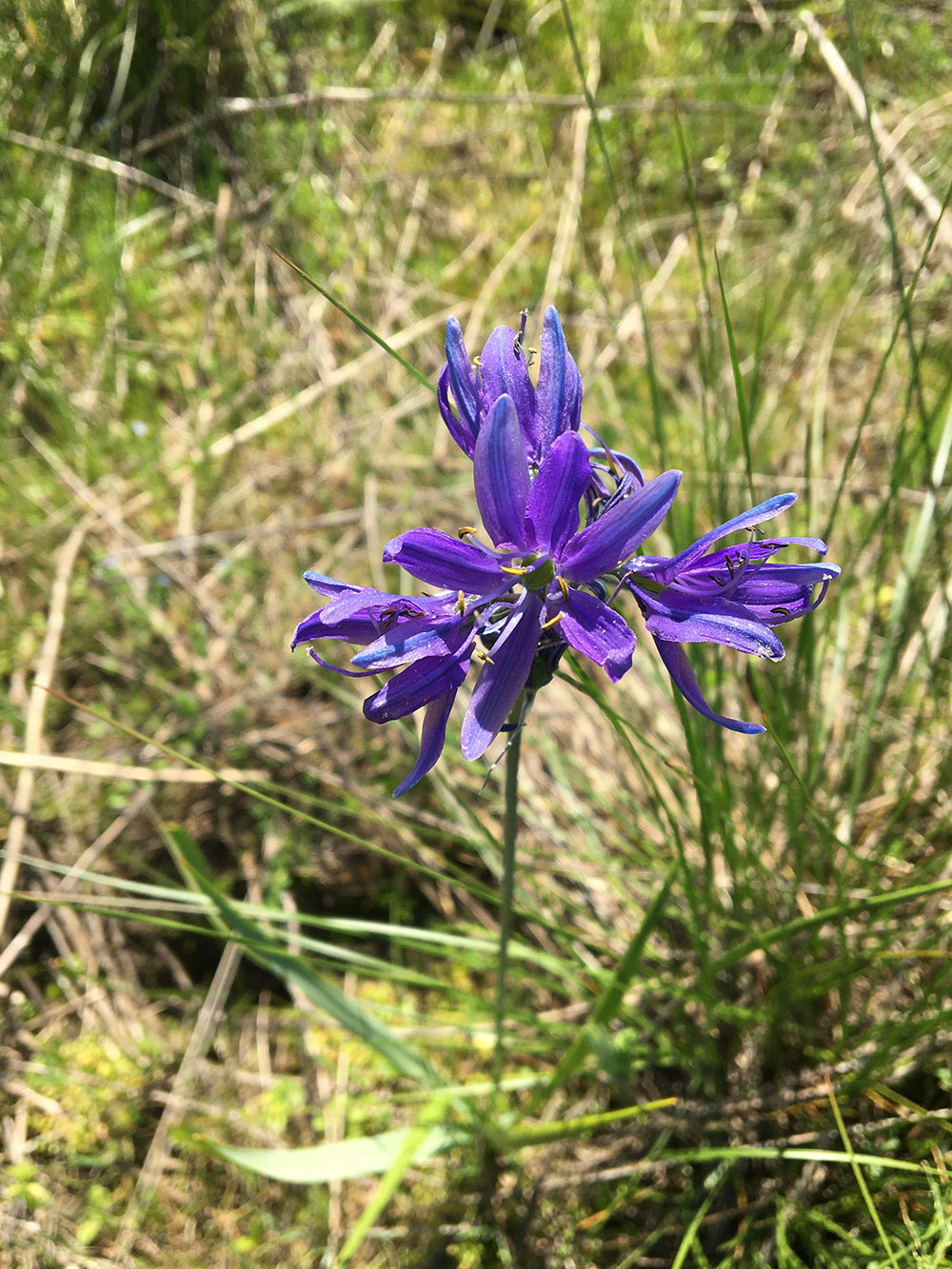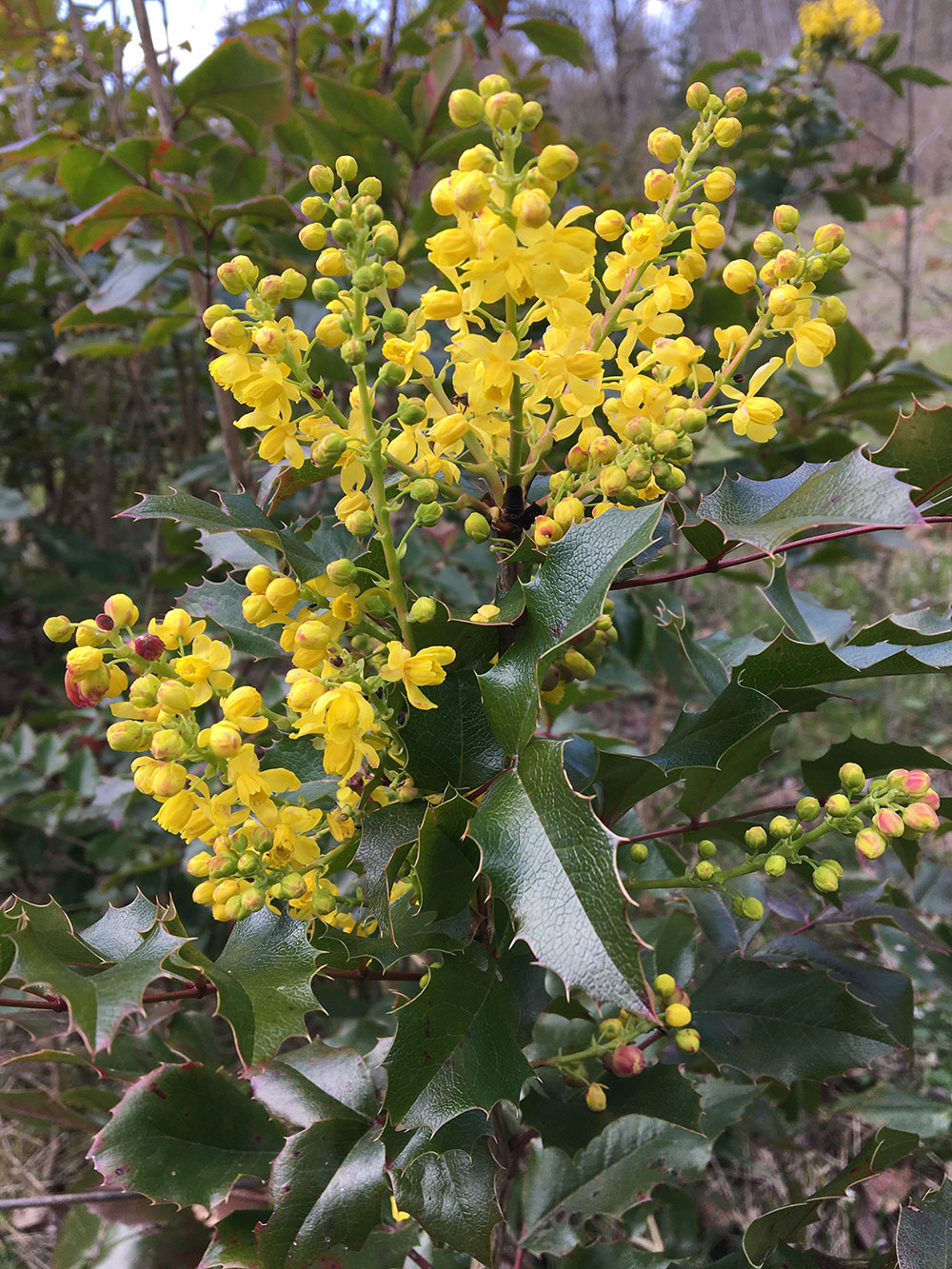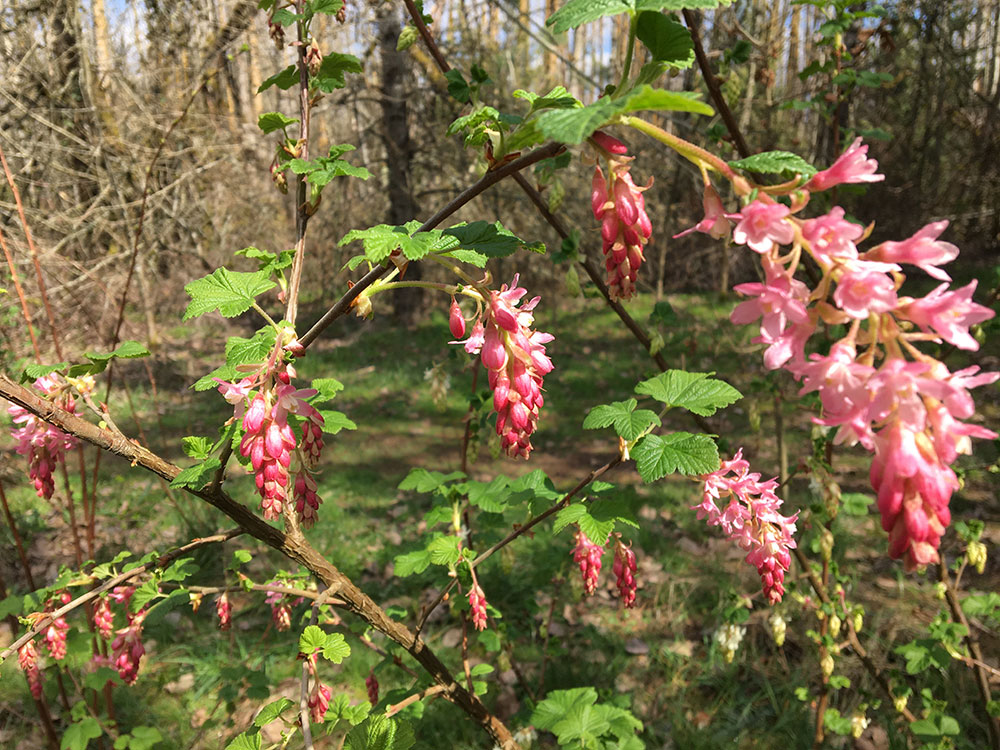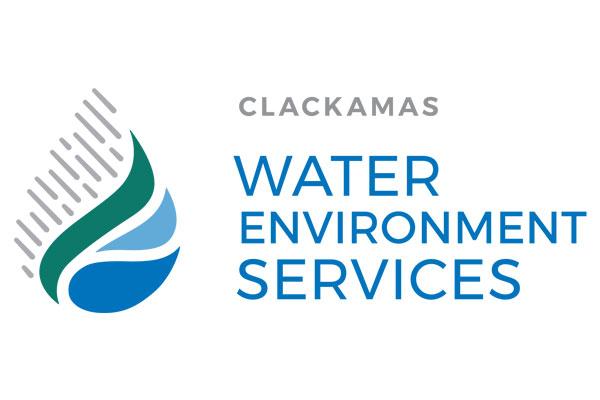Clackamas Water Environment Services is beginning a project to improve the environmental functions of 3-Creeks Protected Area.
Three creeks — Mt. Scott, Phillips and Dean Creeks — converge on the site to form Mt. Scott Creek, making it an important location for surface and stormwater management and natural habitat. Mt. Scott Creek flows into Kellogg Creek and then to the Willamette River.
Urbanization is taking a toll on the site, with streams eroding, habitat changing and flooding of developed properties becoming more common. This project will enhance the floodplain, improve water quality, improve fish and wildlife habitat and provide opportunities for pedestrian access and environmental education on the site, where feasible.
3-CreeksProtected Area benefits our entire region.
What’s new (Updated October 2025)
- Walking tours and all other public use of the site has ended. No public access is allowed during construction, for safety.
- Signs have been posted and flyers distributed to warn people that the site is closed during construction.
- Contractor constructed an access route, including tree removals, in order to allow access to the work areas.
- Contractor began in-water work, completing the first set of post reinforcement structures.
What we’ve completed so far
- Received final permits
- Project is open for bids, due April 29
- North Clackamas Watersheds Council and Unite Oregon continue to schedule walking tours, including a birdwatching tour for the community
- Currently developing materials to make people aware of our schedule and warn about the danger of accessing the site during construction.
- Developed 100% plans, specifications and cost estimate
- Received approval from Oregon Dept. of State Lands (DSL), Oregon State Historic Preservation Office (SHPO) and Oregon Dept. of Fish & Wildlife-Fish (ODFW) Passage Coordinator
- Partner North Clackamas Watersheds Council has completed online meetings and site tours with Unite Oregon and community members
- On-site surveys, site assessment
- Alternatives development and analysis, including Hydraulic & Hydrologic modeling
- Public outreach, stakeholder meetings, and input
- Collaborating with Oregon Dept. of State Lands (DSL), US Army Corps of Engineers (USACE), National Marine Fisheries Service and Oregon Dept. of Fish & Wildlife-Fish (ODFW) Passage Coordinator.
- We were selected for a Metro Nature in Neighborhoods Capital Grant and have a grant agreement in place.
- Developed 90% plans and cost estimate
- Completed a Cultural Resources Assessment and shovel probe survey, and historic evaluation of the existing bridge. The shovel probe surveys turned up 16 pieces of lithic debris, considered pre-contact fragments leftover from tool-making. The bridge was determined not eligible for listing in the National Register.
- Partnering with the North Clackamas Watersheds Council (NCWC) to provide outreach, as part of our Metro Nature in Neighborhoods grant. NCWC is teaming with Unite Oregon to include outreach to underserved communities.
- The Wetlands Conservancy has conducted the first of two volunteer amphibian egg mass surveys. The survey found over 200 Pacific chorus frog egg masses, 24 long-toed salamander egg masses, and one red-legged frog egg mass. This is a sign of very good habitat quality in the existing wetlands!
- Bidding was completed and WES hired a contractor to construct the restoration project.
What’s next?
- Planting fall-winter 2025-26
- Instream work summer 2026
- Planting fall-winter 2026-27
News about the 3-Creeks Protected Area Floodplain Enhancement Project
Clackamas Water Environment Services (WES) celebrated the groundbreaking of the 3-Creeks Protected Area Floodplain Enhancement Project with county officials and our amazing partners.
 Translate
Translate












